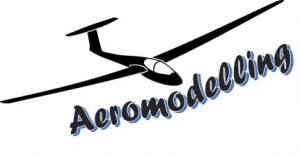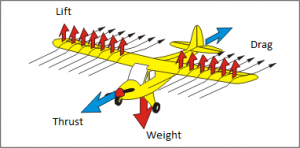The aeromodelling

If you had to establish an order to go into the study of aircraft piloting, it would undoubtedly be necessary to start with the model airplane, to continue later with the gliding flight or without an engine before finishing with the art of piloting itself. The aeromodelism is, therefore, in the very root of the modern science of aviation, so important in the world today.
Aeromodel is called the reproduction of any flying device, built or not to scale, whether it can fly or not. Reduced model is any device capable of flying that can not transport a person. The minimum load of a model airplane is 15 grams per square decimeter for aircraft with rubber engines and gliders, and 50 grams maximum for those driven with thermal engines. Its wingspan should be from 70 to 350 cm.
If, as we said, the aeromodelling must appear in the first place of the lessons of the pilots of aviation, in the historical order, in terms of sport, the aeromodelling is the most recent flight specialty. Before it has existed the ballooning, continued by the flight with sail or without motor and, finally, by the aviation. The aeromodelling is the first step desirable for young people not yet initiated in the aeronautical race, because through it they learn all the technical and practical knowledge on which the construction and flight of the model airplanes are based; In short: the elementary factors of aviation.
ORIGIN AND HISTORY OF THE AEROMODELISM
The current sport aeromodelling has its historical origin in the beginnings of the development of the modern technique of flight, because the problem of the so-called dynamic flight, that is, without a balloon that produces a lift, was solved by the British Guillermo Samuel Henson, in 1843, with his project of flying machine moved by a steam engine, unique that was known then. Another Englishman, Stringfellow, took this idea and built a model with which he was able to fly up to 40 meters away. The first flying machine that is historically spoken of is the "dove" that Arquitas, from Taranto, built 400 years ago. b.J.C. In the fifth century, Muller invented an iron eagle. But the true historical origin of the flight is in the great Leonardo da Vinci, both for the design of the flying machines and for their personal observations on the ascending air currents that allow the flight without the need to beat the wings. It is probable that these studies served professor Dante, of Perugia, for his sailing flights in the hills near Lake Trasimeno, between 1490 and 1500. Continuing this quick historical review we find ourselves with a kind of helicopter with propellers that rotate in the opposite direction and in which bird feathers were used. It was due to the French Launoy and Bienvenu, in 1784. In 1850 the aerial toys of Phillips, Marc Seguin and Babinet appeared. And the Ponton d'Amécourt apparatus in 1863. The first model aircraft that flew freely was that of the Frenchman Alfonso Pénaud in 1871. He made his exhibition in the garden of the Tuileries in Paris, with a device made with wooden slats and propelled by a skein of rubber bands. Penaud, who knew the dynamic flight well, made tests with several other devices. Similar to them was Brown's biplane, in 1874. The American professor Juan J. Montgomery made a flight in 1884 in a glider, starting from the top of a hill to alight, after a horizontal flight in which I take advantage of the ascending wind, to 200 meters away. The machine weighed 20 kg., Had 11 square meters of surface and its occupant was sitting operating the controls of depth and direction. Other inventors and builders were Tatin and Farber, in France; Kress, in Austria; Forlanini, in Italy; Hagrave, in Great Britain, until reaching the Lilienthal brothers, being the theoretical investigations and the practical experiments of Otto Lilienthal those that gave solid base to the aerodynamic science. Otto Lilienthal made numerous sailings, in one of which he met his death in 1896, and was undoubtedly the first aviator of this specialty that so favored the technical training of the Wright brothers, one of which, Orville, piloted the 17th December of the year 1903 the first airplane moved by gasoline engine. Another name that must be remembered is the American professor Langley, whose model with steam engine of 14 kg made in 1896 a flight over the Potomac, traveling 12 km. In 1905 Montgomery reappeared with another glider of 19 kg of weight and 16 m2 of surface, whose novelty was that, instead of being thrown from the top of a slope, it was raised at high altitude by a balloon full of hot air and released from there, thus being possible a longer duration of the flight. The favorable result of these tests resulted in the Montgomery disciples creating an air acrobatics modality with paid exhibitions. Orville Wright also took advantage of them, who built an experimental biplane to fly using atmospheric energy. Thus, on October 24, 1911 he managed to rise to 70 meters in height. The years of duration of the First World War meant a parenthesis for these aerial sports activities, since all the efforts of the aviation were dedicated to intervening in the contest.THE AFFECTION TO AEROMODELISM
Acorn Jet cites aeromodelling fans in Cáceres
Estela Club
THE CONSTRUCTION OF THE AIRCRAFT MODELS
Two kinds of models are built. Some are for flying: the aeromodell and airplane. The first must have excellent flight qualities; the second is an exact imitation of a real plane. Others do not fly, like the scale model, perfect imitation of an authentic airplane, and serve for publicity or scientific experiences. For sporting purposes, model airplanes are of interest, of which the following types exist: the current, composed of a fuselage, a wing and rudders of depth and direction; the tandem, in which the rudder is replaced by a second wing; the canard, which flies upside down; the flying wing, reduced to a support surface or wing. If these models do not have a motor and a propeller, they are called aeromodels without a motor, a sail or gliders; if the propulsion is artificial, by rubber engine or gasoline, they are called propulsion or engine model airplanes. To build model airplanes it is necessary to know the fundamental laws of physics. As for air resistance, the various parts of the model that come into contact with the air must have the minimum resistance to advance, in order to save the force to drive the device. There is also the lifting force, which means that in order to fly an apparatus it must be constituted by an inclined plane that moves with certain relative speed with respect to the air. It is also necessary to take into account the center of pressures or thrust, which varies according to the angle of incidence, which is the one that forms the string of the profile with the direction of the air current, in such a way that if said angle increases the center of push, it moves forward, and if it decreases, it moves backwards. The strength of the profile or the wing depends on its shape and the action of the friction of the air against the outer surface. The current of air, when leaving the angle of the wing, forms a swirl that increases the resistance and, to reduce it, the wing must have an appropriate elongation to the relation between the length and the average width of the wing. The planned flight angle is formed by the horizontal and the flight direction line with which a model aircraft descends planning. As for the stability of an airplane in the air, it is equivalent to the arrangement of a balance and has a longitudinal axis, a transverse axis and a vertical axis, which intersect at the center of gravity of the apparatus. The movements around each of these axes correspond to the three main guiding organs of an airplane, which are the ailerons, the rudder and the rudder. Since these controls are operated by the pilot, and an old model airplane does not have it, it must be constructed in such a way that it is automatically maintained or returned to its flight configuration.HOW TO FLY THE AIRCRAFT MODELS
Flying a model airplane is a true sport, forcing people to run and move outdoors. You have to know aerotechnics, topography, meteorology and have general knowledge, including knowing how to observe the flight of birds. For a model aircraft to fly, it must be ensured that its center of gravity is well disposed with respect to the width of the wing. The model has to be balanced and to achieve this, lead is added or removed in the ballast chamber. The first flight practices should be done without wind and on flat terrain without obstacles. There are two kinds of released: on the run and by hand. The first consists of seating the model in the air at the moment of the race in which it is noticed that the device tends to escape from the hand, because the lifting force already acts on the wing, balancing the weight of the model. The throwing to the race serves to train the beginners. The expert aeromodelista launches without giving more than two or three steps, at most, against the wind. This system is more difficult, but sometimes it is the only one possible due to the condition of the terrain. The direction and intensity of the wind must be taken into account. The model is launched against the wind, trying to give it the speed it would have acquired in the launch to the race. In the launch to the race, as in the one that is done by hand, we must make the model start with the nose down. All flights must be observed in order to check the defects and correct them. Once tested the model on flat ground and corrected the possible small errors, it is passed to the thrown from the slope of a hill, not at its top, without obstacles and against the wind. There is also the launch in height, similar to that used to raise a kite, but the model aircraft, when reaching a certain height, detaches from the cable and continues its flight freely. This kind of take-off is carried out with the help of a hook firmly attached to the lower part of the fuselage and which has been curved so that the traction cable ring detaches easily at the right time. The cable is a thread or cord waxed, light and solid. Its length depends on the wingspan of the model airplane. There are several systems of this kind launched. If you use the similar to a kite, you run against the wind pulling the cable, a quarter of which must be rubber. Finally, it is necessary to mention the motor model, which can be rubber or gasoline. The rubber propeller consists of a bundle of thin rubber cables that are given a certain number of turns to load the engine. The model airplane is today a sport that has reached an extraordinary diffusion and its benefits are undoubted for the aeronautical specialty.
Thanks to @steemiteducation for supporting educational content




